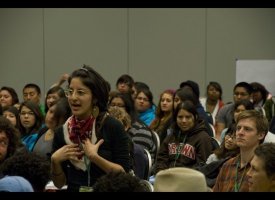Going green, developing a sustainable lifestyle and a resilient community is a journey. Following are green New Year’s resolutions from a few Green Community Connections members. Let’s help each other and hold each other accountable! Pam: Welcoming life back to this little outpost on the earth we share with all beings by planting more natives, eliminating lawn, and educating myself on how the choices I make impact the health of the soil, water, and ecosystem.
Laurie: To get out more in the evenings with my family. I hope we will attend a few school concerts or plays, explore the library or simply enjoy a walk under the stars.
Dick: Take out our lawn and put in a native garden...why grow a lawn when one could have native habitat with deep roots protecting our soil and water. I would also like to get to zero carbon - I need to drastically reduce with my energy use - by putting solar on my roof, my congregation's roof, and push Oak Park solar.
Continue reading this article to see more resolutions - and to add your own!
 Sally: I'd like to spend more time in nature – to care for myself and learn from and about natural systems. I also want to reduce my use of fossil fuel-based energy: increase our home energy efficiency, seriously consider solar, bicycle more, and drive less. (Become fossil-fuel free in 10 years!) Additionally, I want to develop my political voice (and not just through signing online petitions) – get out, demonstrate, lobby, get arrested?!
Sally: I'd like to spend more time in nature – to care for myself and learn from and about natural systems. I also want to reduce my use of fossil fuel-based energy: increase our home energy efficiency, seriously consider solar, bicycle more, and drive less. (Become fossil-fuel free in 10 years!) Additionally, I want to develop my political voice (and not just through signing online petitions) – get out, demonstrate, lobby, get arrested?!
Katie: I'm trying to live by example at work. Our office recently switched from brewed coffee to Keurig, wasting hundreds of pieces of plastic, probably every day. They also insist on plastic cutlery, and styrofoam in the kitchen. I've brought my own french press, as well as utensils and dishes to use during the day. It may seem like a small move, but someone asks me about it in the kitchen, and have the opportunity to explain why I made the choice. I've also made an intention to put my health first. Might not seem related to environmentalism, but the way I see it, the only way I'll be able to make changes, and be a voice for change, is to be my best, healthiest self.
Ana: Get outside! Everyday if possible, get out to walk to dog, breath the air, clear my mind, observe wildlife, bring my kids -- even if for just a few minutes a day. To get me "unstuck," or to get me inspired. What a difference it can make! Also, to get further down my list of urban homesteading skill-building: get better at canning & preserving, build a solar oven, try more permaculture projects like planting a fruit tree guild & learning more about how to build food forests.
Add Your Resolutions
Whether you’re a believer in small steps or one who likes to dream big, we invite you to share your green New Year’s resolution(s). We can root for one another and perhaps make some connections to provide practical support for one another! Add a comment to this post and/or on our Facebook page to let us know your plans for the new year - and the new you.
Consider attending the Active Hope workshop we are holding beginning Monday, January 13! it is a chance to gain strength from others with similar commitments.



 The film selection process
The film selection process







